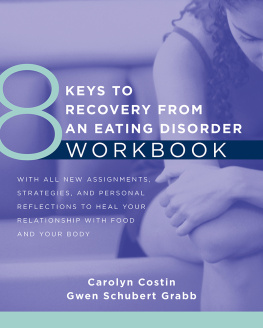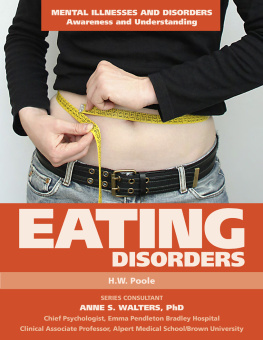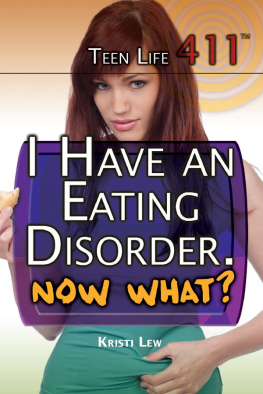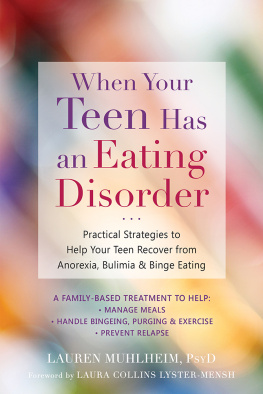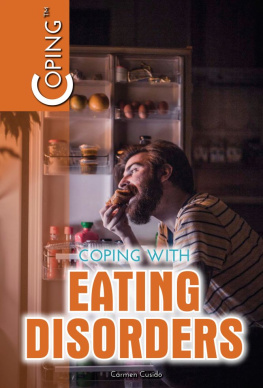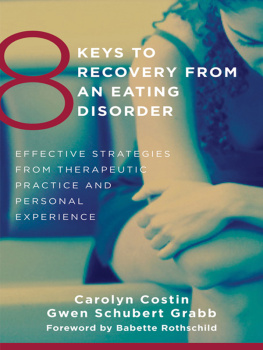

Copyright 2007 by Carolyn Costin. All rights reserved. Except as permitted under the United States Copyright Act of 1976, no part of this publication may be reproduced or distributed in any form or by any means, or stored in a database or retrieval system, without the prior written permission of the publisher.
ISBN: 978-0-07-181999-2
MHID: 0-07-181999-1
The material in this eBook also appears in the print version of this title: ISBN: 978-0-07-147685-0, MHID: 0-07-147685-7.
All trademarks are trademarks of their respective owners. Rather than put a trademark symbol after every occurrence of a trademarked name, we use names in an editorial fashion only, and to the benefit of the trademark owner, with no intention of infringement of the trademark. Where such designations appear in this book, they have been printed with initial caps.
McGraw-Hill eBooks are available at special quantity discounts to use as premiums and sales promotions, or for use in corporate training programs. To contact a representative please e-mail us at bulksales@mcgraw-hill.com.
TERMS OF USE
This is a copyrighted work and The McGraw-Hill Companies, Inc. (McGraw-Hill) and its licensors reserve all rights in and to the work. Use of this work is subject to these terms. Except as permitted under the Copyright Act of 1976 and the right to store and retrieve one copy of the work, you may not decompile, disassemble, reverse engineer, reproduce, modify, create derivative works based upon, transmit, distribute, disseminate, sell, publish or sublicense the work or any part of it without McGraw-Hills prior consent. You may use the work for your own noncommercial and personal use; any other use of the work is strictly prohibited. Your right to use the work may be terminated if you fail to comply with these terms.
THE WORK IS PROVIDED AS IS. McGRAW-HILL AND ITS LICENSORS MAKE NO GUARANTEES OR WARRANTIES AS TO THE ACCURACY, ADEQUACY OR COMPLETENESS OF OR RESULTS TO BE OBTAINED FROM USING THE WORK, INCLUDING ANY INFORMATION THAT CAN BE ACCESSED THROUGH THE WORK VIA HYPERLINK OR OTHERWISE, AND EXPRESSLY DISCLAIM ANY WARRANTY, EXPRESS OR IMPLIED, INCLUDING BUT NOT LIMITED TO IMPLIED WARRANTIES OF MERCHANTABILITY OR FITNESS FOR A PARTICULAR PURPOSE. McGraw-Hill and its licensors do not warrant or guarantee that the functions contained in the work will meet your requirements or that its operation will be uninterrupted or error free. Neither McGraw-Hill nor its licensors shall be liable to you or anyone else for any inaccuracy, error or omission, regardless of cause, in the work or for any damages resulting therefrom. McGraw-Hill has no responsibility for the content of any information accessed through the work. Under no circumstances shall McGraw-Hill and/or its licensors be liable for any indirect, incidental, special, punitive, consequential or similar damages that result from the use of or inability to use the work, even if any of them has been advised of the possibility of such damages. This limitation of liability shall apply to any claim or cause whatsoever whether such claim or cause arises in contract, tort or otherwise.
Contents
Acknowledgments
MY TEACHERS HAVE been many, and my anorexia was one of the best. I am grateful now for so many important lessons learned at an early agelessons I continue to do my best to pass on to others. My work and this book would not exist without my past and without the many incredible, lovely people who have enriched my life and thus these pages. This book is dedicated to you all.
To my clients and their families, who share deeply, struggle valiantly, and teach me well.
To my colleagues in the field, who endure my endless quest for knowledge, clarification, and understanding and who continue to provide it.
To all my staff members who are my friends and comrades in this war against eating disorders. Thank you for your dedication and for suffering through my absences necessary for writing.
To my roadiesthe people who take care of me, find my lost notes, read my rough drafts, bring me coffee, rub my shoulders, and encourage me to keep writing. You know who you are. You make it possible for me to do all that I do.
To my dearest friends, who allowed me to put not only this book, but over the years many things, before watching the sunset with them, even though it should always be the other way around.
To all the people who have read Your Dieting Daughter and the previous editions of The Eating Disorder Sourcebook, especially those who let me know that my writing meant something and was worth continuing.
To my husband, Bruce, and my dog, Gonner, the best teachers of all.
Contributors
IN THE FOLLOWING chapters, I was fortunate to work with several contributors. These coauthors helped me out tremendously by adding their expertise. Their addition has made this sourcebook a richer resource of information.
: Enough About Your Mother, What Did You Have to Eat Today? The following registered dietitians coauthored this chapter: Marcia Herin, Karen Kratina, Diane Keddy, Rebekah Mardis, Erin Naimi, Francie White, and Kim Wyman.
: Medical Assessment and Management. Richard L. Levine, M.D., professor of pediatrics and psychiatry, Penn State College of Medicine; chief, Division of Adolescent Medicine and Eating Disorders, Penn StateMilton S. Hershey Medical Center; and Philip Mehler, M.D., chief, General Internal Medicine, Department of Health and Hospitals, Denver, Colorado, coauthored this chapter.
: The Psychiatrists Role and Psychotropic Medication. Timothy D. Brewerton, M.D., DFAPA, FAED, clinical professor of psychiatry and behavioral sciences, Medical University of South Carolina, coauthored this chapter.
: Alternative Approaches to Treating Eating Disorders. Coauthors for this chapter were Carolyn Coker Ross, M.D., M.P.H., head of Eating Disorders Program and Integrative Therapies Department, Sierra Tucson, and Hamlin Emory, M.D., psychiatrist at Monte Nido Treatment Center, Malibu, California, private practice, Beverly Hills, California.
: Increasing Awareness and Prevention. Michael Levine, Ph.D., FAED, professor of psychology, Kenyon College, coauthored this chapter.
Introduction
THIRTY-SEVEN YEARS AGO, when I was 15, I went on a diet. By the time I was 17, some 40 pounds lighter, and still losing, something was terribly wrong. The first doctor my mother took me to told her that I might be trying to lose weight to hide a pregnancy. The first therapist I went to suggested that if eating made me feel guilty, perhaps I should try eating by myself. The only psychiatrist I ever saw tried to get me to drink a regular Coke in his office so he could watch. None of these professionals had ever heard of anorexia nervosa, much less had any knowledge of how to treat it. Finally, in 1973, my mother found the first book written about the subject by Hilda Bruch called Eating Disorders: Obesity, Anorexia Nervosa and the Person Within, which was geared for professionals and had only a small section at the end on a strange syndrome of self starving called anorexia nervosa. This was the beginning of understandingfor myself and the world at largethat there was actually a name for these thoughts and behaviors I had. My morbid fear of weight gain was an actual illness and others suffered from it too.
The field has come a long way since then. Once I recovered and eventually began treating eating disorders, I decided to write a book. At first I hesitated, because I thought, Who will be interested except people with anorexia and their moms, and how many of those could there be? but soon I started pouring out the pages. Before I finished, Hilda Bruchs book for the public
Next page

